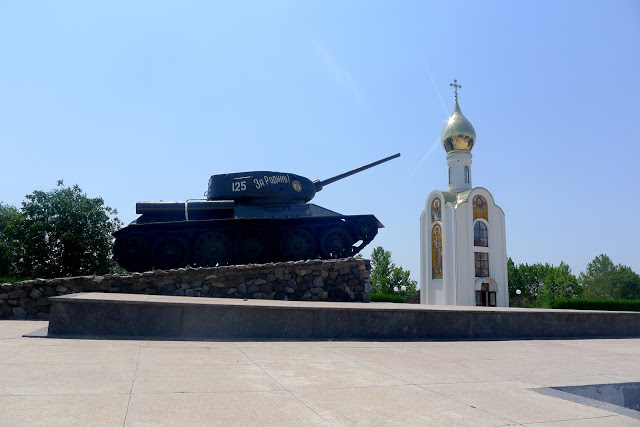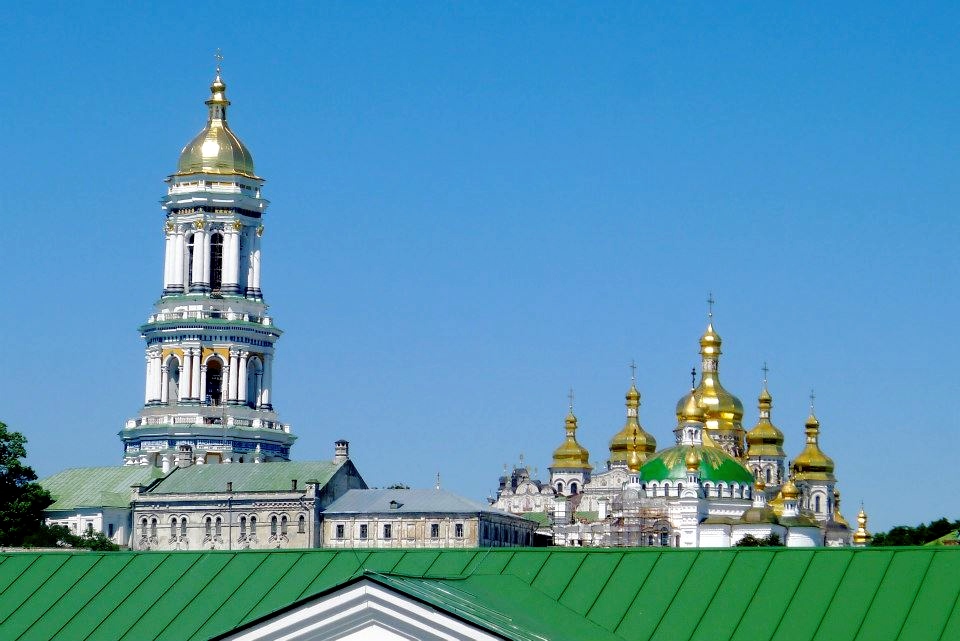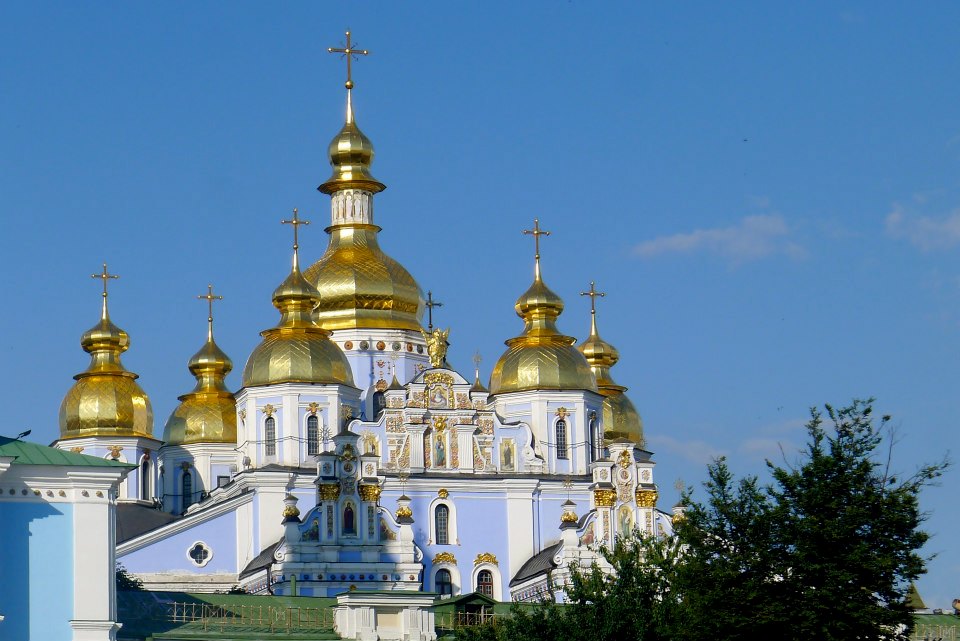
One Million Golden Onion Domes: The Churches of Kiev
Of all the great European capitals, I never expected Kiev to be so high on my list of must-see places. In my mind, Ukraine had always conjured images of a flat wasteland with little more than rolling plains and large, industrial cities. I never imagined its capital to be so vibrant, culturally significant and dazzlingly beautiful.
We visited Kiev because we were looking for a city near Chisinau that was connected to Italy by budget flights. After a bit of research, the closest places we could find were Cluj (our entrance point), Bucharest (Romania’s capital) and Kiev. We chose Kiev partly because of its easy access by overnight train from Chisinau and partly because it provided us with a new perspective on Eastern Europe.
Kiev was a last minute, haphazard decision, but it was one I certainly do not regret.
Visiting Kiev’s Churches and Attractions
Long before Ukraine and Russia existed, Kiev’s inhabitants began building a glorious town. It is from here, that East Slavic civilization spread across Eastern Europe and Russia.
Thus, Kiev’s architecture greatly resembles that of its gargantuan easterly neighbor. Its ornate onion-domed churches even rival the fabled cathedrals of St Petersburg and Moscow.
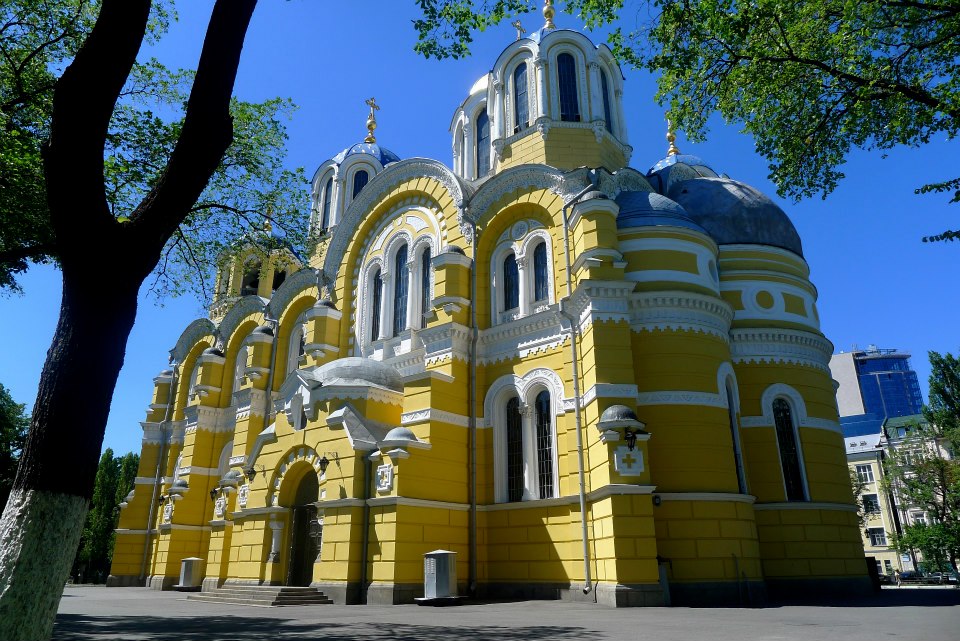
Kiev’s history is evident in its religious and architectural landscape. The city is an important center of Eastern Orthodox Christianity. The city houses numerous churches, monasteries and pilgrimage sites. We visited many of Kiev’s churches during our first two days in the city and were amazed by their grandeur and beauty.
St Michael’s Monastery in Kiev
The first church we visited was St Michael’s Monastery–a UNESCO World Heritage site with a baby blue exterior and picturesque golden domes. It was originally built during the Middle Ages in the Byzantine style. Its interior remains Byzantine, but its outside was beautifully reconstructed in Baroque in the 1800s.

St Sophia Cathedral in Kiev
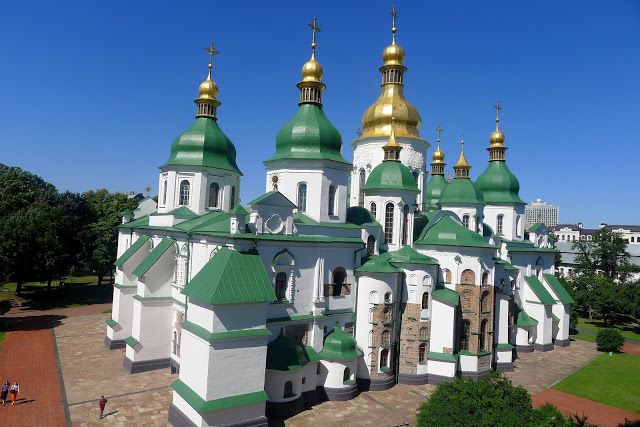
The cathedral has a beautifully painted interior, too, but I unfortunately was not allowed to take pictures of it.
St Andrews Church
Not far from St Sophia and St Michaels is another fantastic church named St Andrews. St Andrews dates back to the mid 1700s and was built by architect Bartolomeo Francesco–the same man who designed Catherine’s Palace in St Petersburg. Russian Empress Elizaveta Petrovna, daughter of Catherine I, intended for the church to be part of her summer palace. Yet, since she died before the completion of the complex, the palace itself was never constructed.
St Andrews struck me with its elegance. It is very different from both of the other cathedrals we had seen and, yet, it is no less beautiful. It is perched on the top of a hill overlooking the steep Andriyivskyy Descent–a pretty street lined with shops, numerous souvenir stands and elegant buildings.
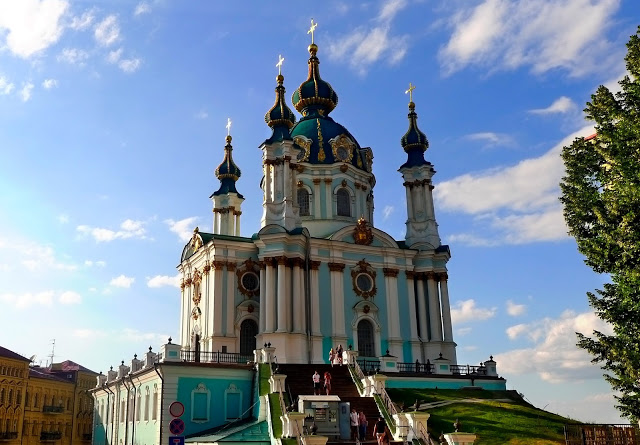
St Volodymyr’s Cathedral
The last of the pretty churches we visited in Kiev, was St Volodymyr’s Cathedral. It has a bright yellow exterior, with arched windows and pretty domes that resemble a night sky. They are painted deep blue with bright golden stars. Its interior is covered in byzantine-style frescoes and is buzzing with individuals going about their daily prayers. There are numerous chapels inside the cathedral and the devout atmosphere it exudes reminded me somewhat of the Church of the Holy Sepulchur in Jerusalem.
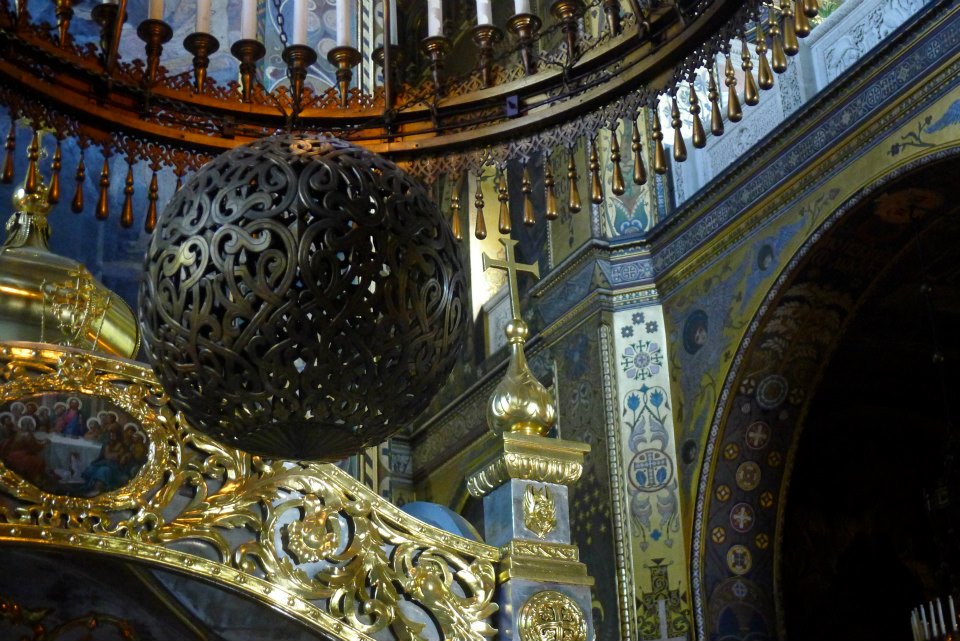
Kiev-Pechersk Lavra Monastery
After two days of touring the beautiful churches of Kiev, we decided to spend our last day in Ukraine’s capital at the Caves Monastery–also known as Kiev-Pechersk Lavra. It is a preeminent center of Eastern Orthodox Religion and draws pilgrims and worshippers from around the world. The monastery contains numerous religious monuments, including small chapels, large cathedrals, one of the world’s largest bell towers and a network of underground tunnels.
The maze of underground corridors connects various underground caves with ancient living quarters and tombs of important religious figures. They are 383 meters long and date back to 1057. We were unable to get a comprehensive look at the underground caves, because we were squeezed between other worshippers who moved about the tunnels in a single file lines. Yet, what I experienced was unforgettable. Hundreds of pilgrims carried candles through the dark corridors, signaling the sign of the cross at every step. The devout atmosphere was both powerful and overwhelming.
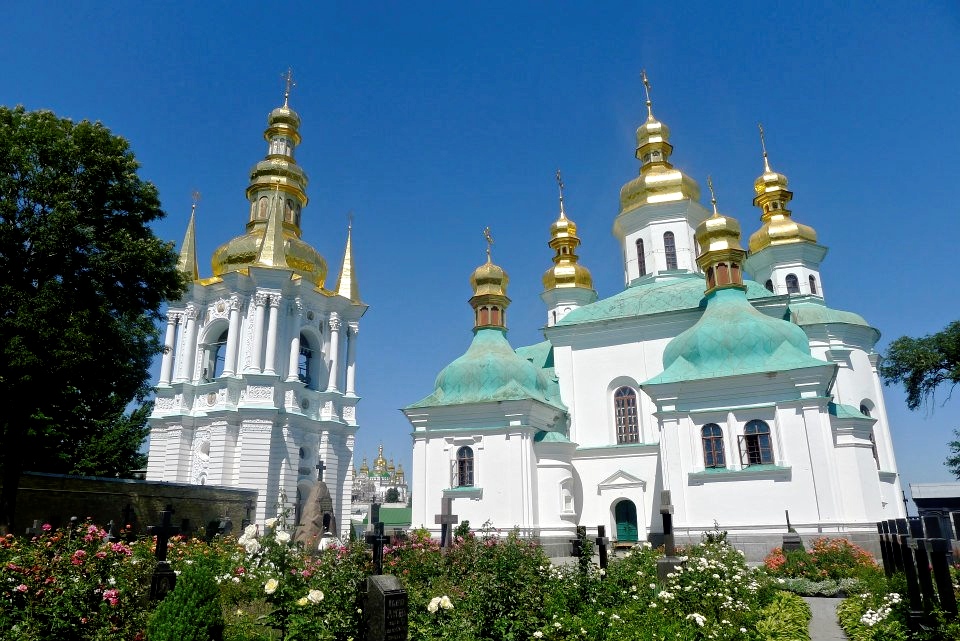
Additional Places to Visit in Kiev
While visiting the churches of Kiev was certainly one of the highlights of our trip to Eastern Europe, the city has a number of other notable buildings worthy of visiting.
-
Maidan Nezalezhonsti
Maidan Nezalezhonsti (also known as Independence Square) is the beating heart of Kiev. All streets in town seem to lead to the large gathering point that brings together a cross-section of Kyiv life: vendors selling food and souvenirs; shoppers toting bagfuls of the latest trends; young lovers; old friends.
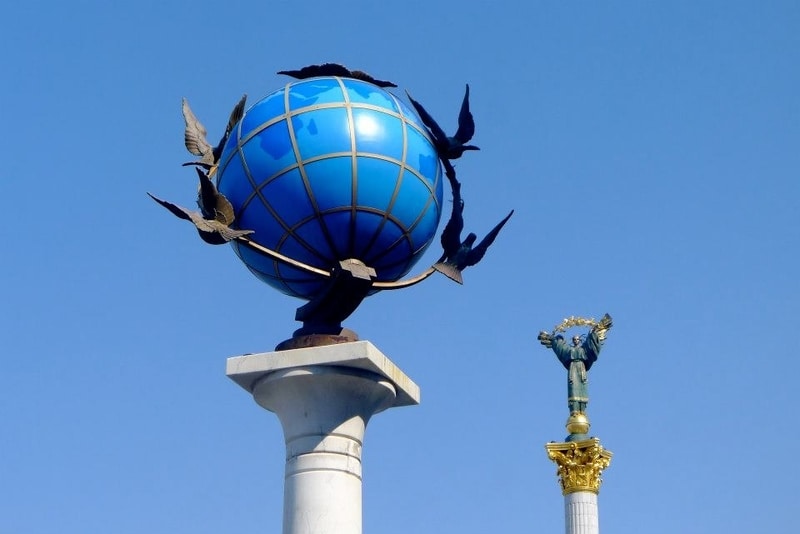
Whenever Ukrainians want to get together, Independence Square becomes the nation’s living room. The square saw pro-independence protests in the 1990s, the Orange Revolution in 2004, and the Euromaidan Revolution of 2013-14.
On ordinary days, it shelters friends, lovers, and wayward tourists below the shadow of its winged angel.
-
Golden Gate
The Golden Gate is one of Kiev’s top attractions. It stands at the location of the city’s original 11th century fortifications. It was named in imitation of the Golden Gate of Constantinople.
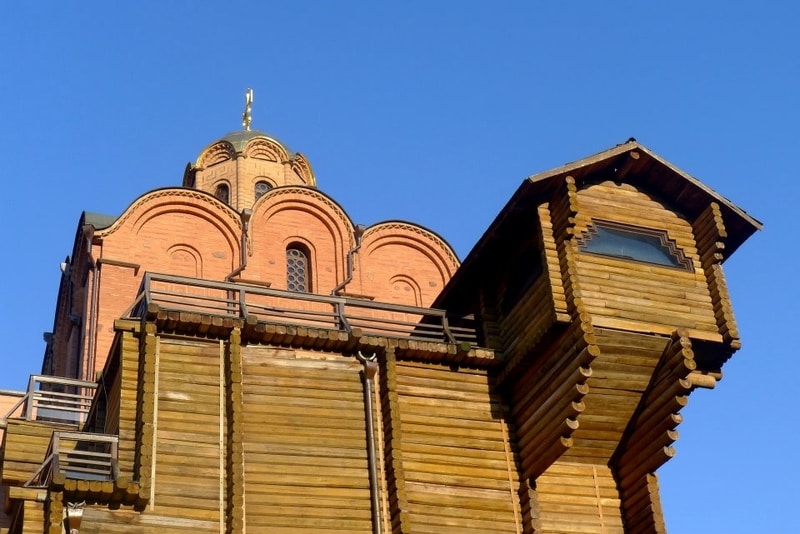
In truth, the reconstructed Golden Gate is unlikely to share many characteristics with the city’s original entry point. There are few remaining vestiges of the Medieval structure. The current gateway dates to 1982.
-
The Gorodetsky House
Lying opposite the President’s Residence on Bankova Street, the Gorodetsky House is the pinnacle of Art Nouveau architecture in Kiev.
Also known as the House with Chimeras, the Art Nuveau masterpiece dates to 1901-02 and was designed by the Polish-Ukrainian architect Władysław Horodecki as his personal home.
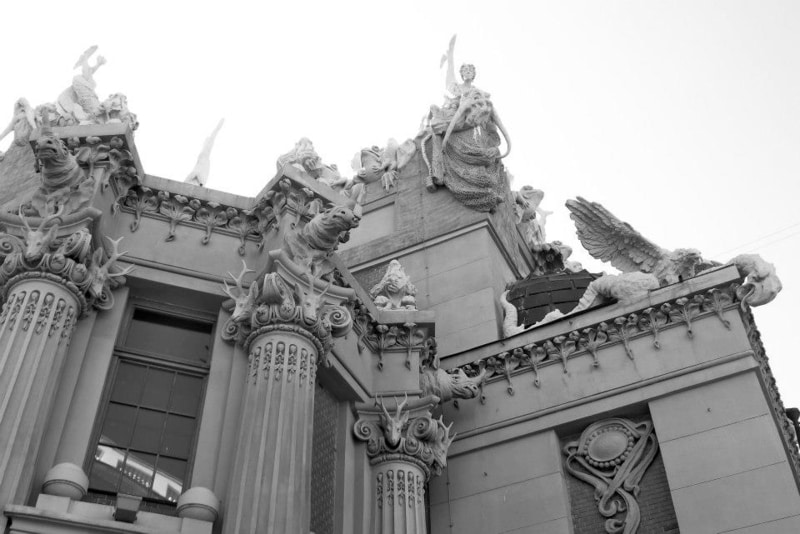
Though I did not enter the Gorodetsky House, I admired its carved exterior. It reminded me of the Gaudi architecture one might find in Barcelona.
-
Holodomor Genocide Musuem
One of the attractions that struck me most during our last day in Ukraine’s capital was not its beauty and architectural wealth but, rather, a monument that we stumbled across on our way back from the Caves Monastery. It was a monument to the victims of Ukraine’s famine-genocide of 1932-1933. Like the Armenian Genocide Museum in Yerevan and the Dachau Concentration Camp in Munich, the memorial is a gut-wrenching display that can be difficult to digest.
Still, it is worth visiting—not least in order to gain a deeper understanding of humankind’s capacity for hatred.
In the early 1930s, a great famine swept through the Ukrainian countryside. It is one of the most tragic events of the twentieth century, though few outside of Ukraine have even heard of it. The great famine has been named the Holodomor, which literally means “death by starvation” or “hunger plague.”
Most scholars believe that the famine was a ploy by the Soviet Union to quell Ukrainian nationalism. Its root causes are often debated but, there is no doubt that the famine was intentional. In 1932, the Soviet Union declared that all food belonged to the state and, thus, that the mere possession of food constituted a crime against the state. During this time, authorities distributed very little food and peasants were forced to starve. It is estimated that as many as ten million people died during the Holodomor.
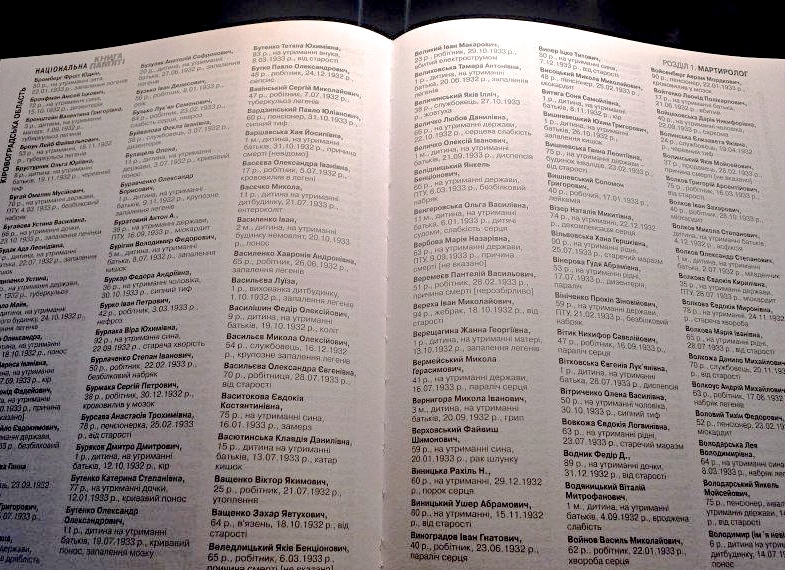
During our visit to Kiev, I was constantly surprised by the beautiful churches of Kiev and by the city’s plethora of relatively undiscovered attractions. Our whirlwind tour of the city exposed me to Ukraine’s rich culture and history and painted a vibrant picture of Orthodox Christian architecture and religion.
Yet, while Kiev gave me an opportunity to witness numerous architectural masterpieces and religious centers of worship, it also highlighted the country’s darker days and remind me of the great suffering that took place behind the city’s aesthetically-pleasing facade.
***
Note: Check out Amy’s post for more tips on how to spend 48 hours in Kiev and Kami’s post for recommendations on other places to visit in the Ukraine.

